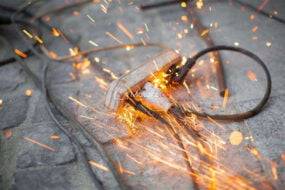Electrical Shorts Address Common Electrical Short Causes are the lifeblood of modern technology, powering everything from our homes to industries. However, the smooth operation of these systems can be disrupted by a notorious culprit: electrical shorts. Understanding the common causes of electrical shorts is crucial for maintaining Electrical safety, preventing damage, and ensuring the longevity of electrical components.
What is an Electrical Short?
Electrical Shorts Before delving into the causes, let’s establish what an electrical short is. An electrical short occurs when a current takes an unintended path due to a low-resistance connection, resulting in a circuit malfunction. This can lead to overheating, fires, and damage to electronic devices.
Common Causes of Electrical Shorts
One prevalent cause of electrical shorts is compromised insulation. Over time, insulation can wear down due to factors like heat, moisture, and physical damage. This exposes wires and allows them to come into contact with each other, causing a short circuit. Regular inspections and timely replacement of worn-out insulation are key preventive measures. Loose connections pose a significant risk of electrical shorts. Vibrations, thermal cycling, or poor initial installation can lead to connections becoming loose over time. Regular maintenance and securing connections can prevent this common cause of electrical shorts.
Overloading
Overloading occurs when a circuit is forced to handle more current than it is designed for. This excess current generates heat, potentially causing wires to melt and touch, resulting in a short circuit. Distributing loads evenly and using circuit breakers can mitigate the risk of overloading. Water and electricity are a dangerous combination. Moisture can compromise insulation, corrode conductors, and create paths for current to flow where it shouldn’t. Proper sealing and waterproofing of electrical components are essential, especially in outdoor or damp environments.
Damaged Wiring
Physical damage to wiring, whether due to rodents, abrasion, or accidental impact, can expose conductors and lead to electrical shorts. Regular inspections and prompt repairs are crucial to addressing this potential hazard. Regular visual inspections can reveal signs of wear, damage, or loose connections. Scorch marks, frayed wires, or exposed conductors are red flags that should not be ignored.
Using Multi meters
Multi meters are invaluable tools for detecting electrical shorts. By measuring resistance and continuity, multi meters can pinpoint the location of a short circuit within a circuit or component. Isolating the affected circuit or component is the first step in addressing electrical shorts. By systematically testing and inspecting each segment, one can identify and rectify the root cause. In complex systems or situations, seeking the expertise of a qualified electrician is essential. Professionals have the knowledge and tools to diagnose and rectify electrical shorts safely.
Conclusion
In the intricate web of Electrical Shorts addressing and preventing electrical shorts is paramount. Through vigilance, regular maintenance, and a proactive approach, we can safeguard our electrical infrastructure, ensuring it operates smoothly and safely. By understanding the common causes and taking appropriate measures, we empower ourselves to navigate the currents of electrical challenges with confidence and competence.






